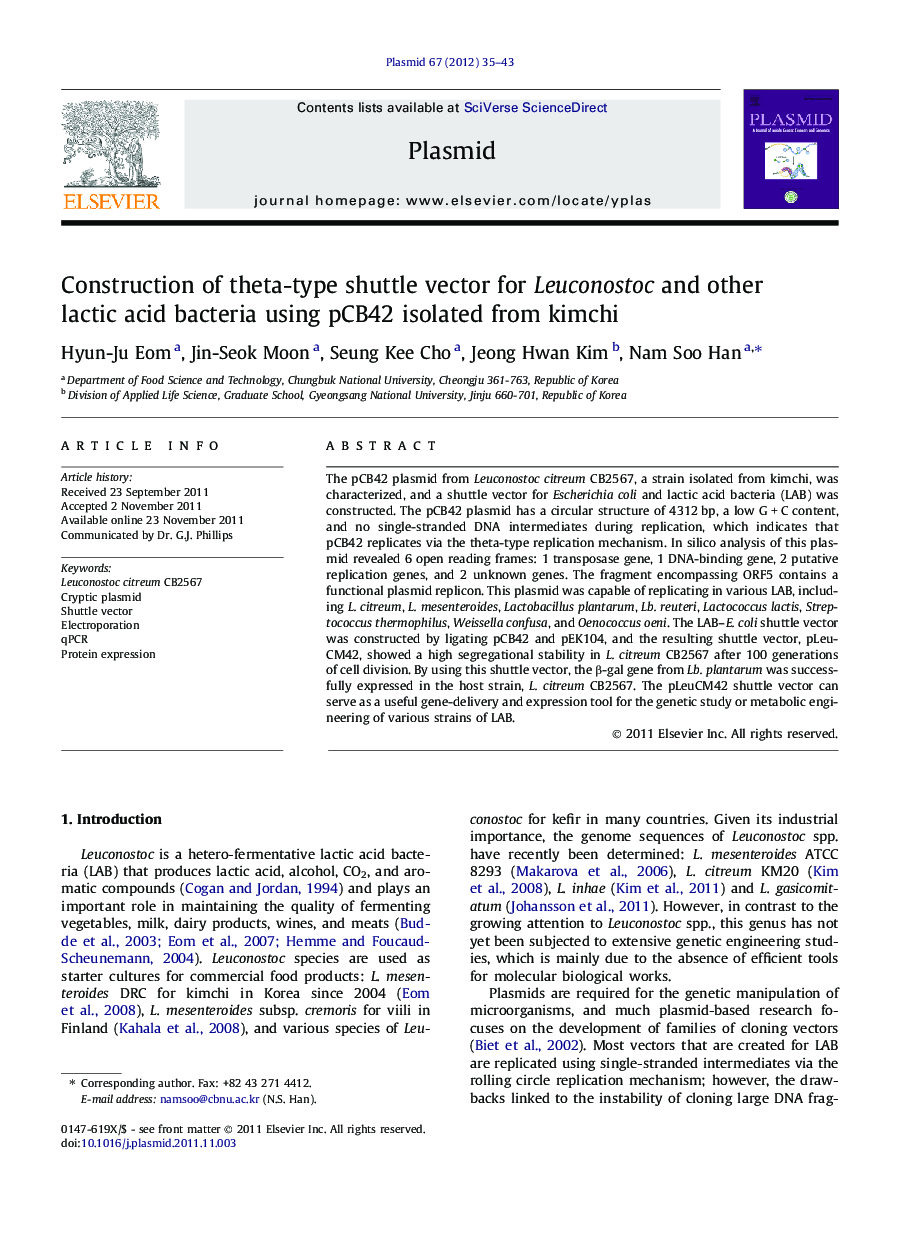| Article ID | Journal | Published Year | Pages | File Type |
|---|---|---|---|---|
| 2824187 | Plasmid | 2012 | 9 Pages |
The pCB42 plasmid from Leuconostoc citreum CB2567, a strain isolated from kimchi, was characterized, and a shuttle vector for Escherichia coli and lactic acid bacteria (LAB) was constructed. The pCB42 plasmid has a circular structure of 4312 bp, a low G + C content, and no single-stranded DNA intermediates during replication, which indicates that pCB42 replicates via the theta-type replication mechanism. In silico analysis of this plasmid revealed 6 open reading frames: 1 transposase gene, 1 DNA-binding gene, 2 putative replication genes, and 2 unknown genes. The fragment encompassing ORF5 contains a functional plasmid replicon. This plasmid was capable of replicating in various LAB, including L. citreum, L. mesenteroides, Lactobacillus plantarum, Lb. reuteri, Lactococcus lactis, Streptococcus thermophilus, Weissella confusa, and Oenococcus oeni. The LAB–E. coli shuttle vector was constructed by ligating pCB42 and pEK104, and the resulting shuttle vector, pLeuCM42, showed a high segregational stability in L. citreum CB2567 after 100 generations of cell division. By using this shuttle vector, the β-gal gene from Lb. plantarum was successfully expressed in the host strain, L. citreum CB2567. The pLeuCM42 shuttle vector can serve as a useful gene-delivery and expression tool for the genetic study or metabolic engineering of various strains of LAB.
► We characterized a novel plasmid, pCB42 in Leuconostoc citreum CB2567. ► pCB42 has board host range and high segregational stability. ► This plasmid is a useful gene-delivery tool for various lactic acid bacteria.
